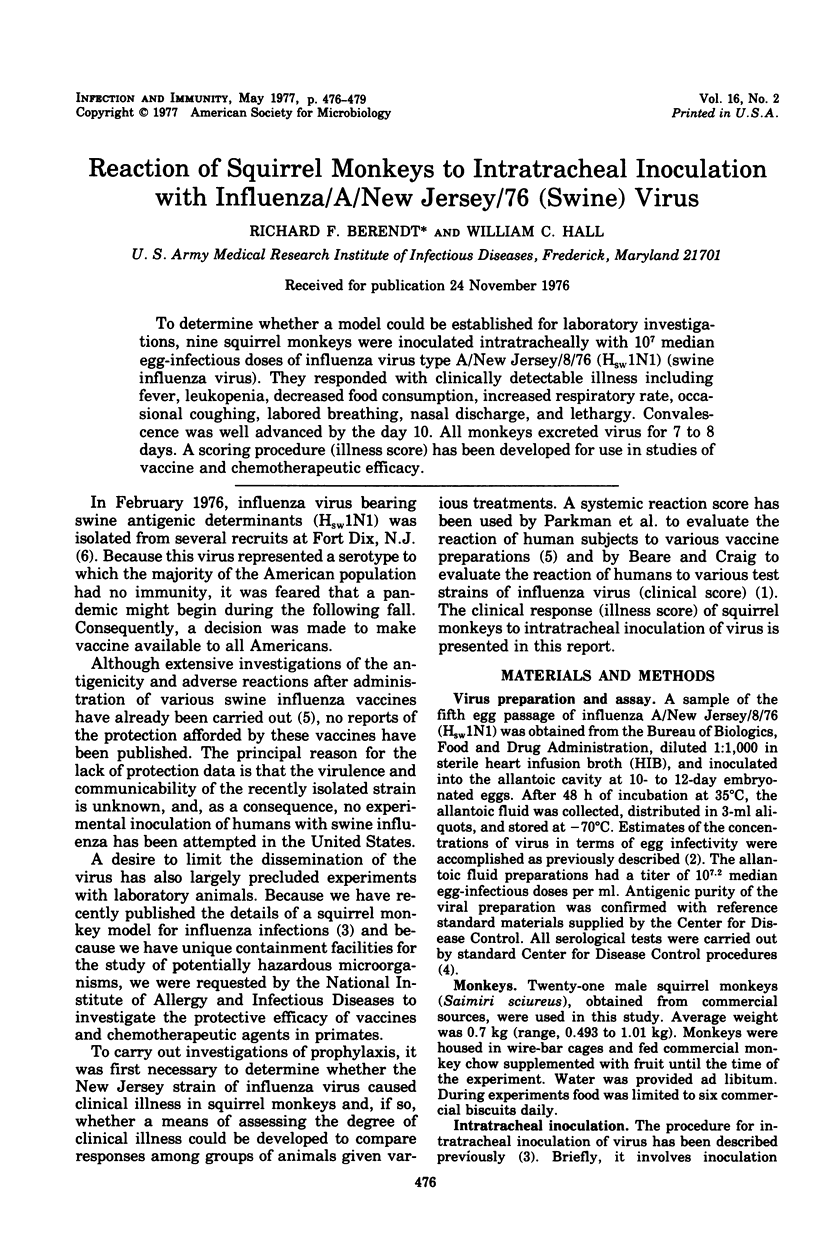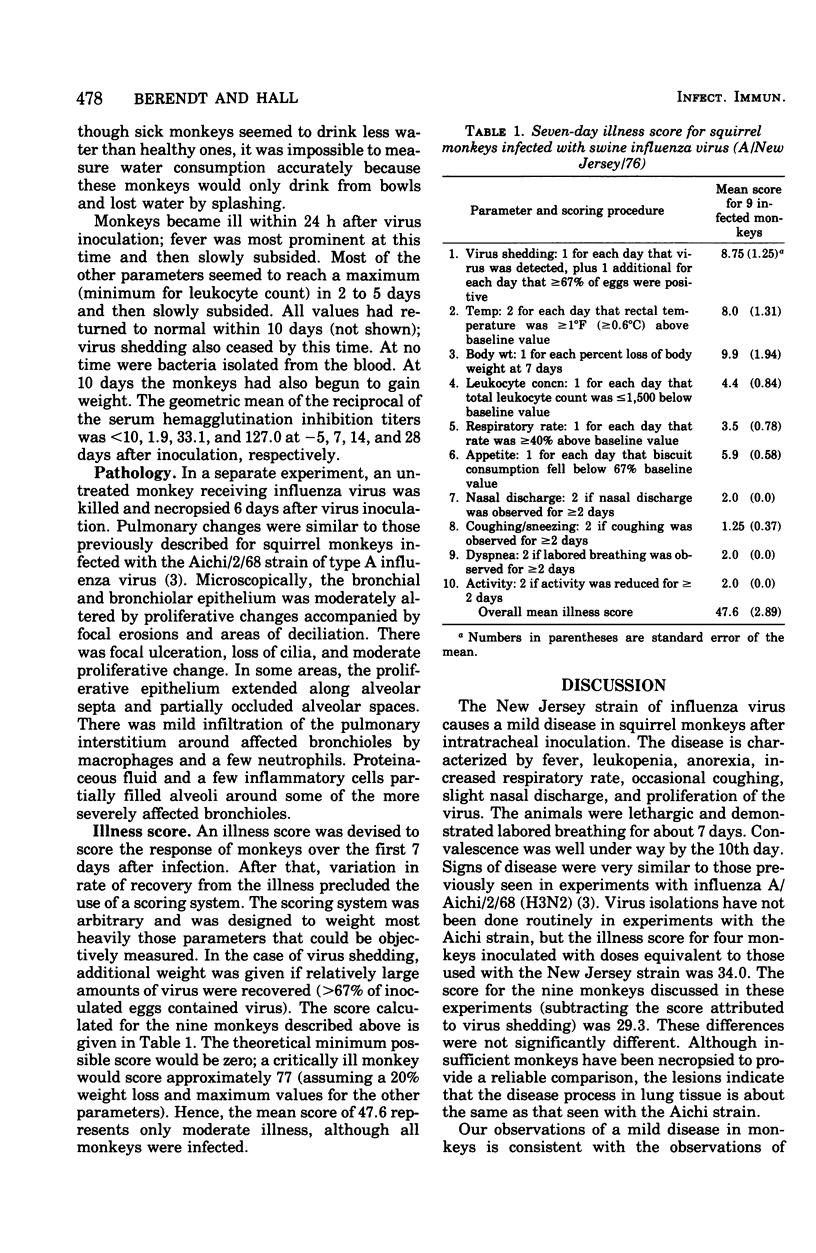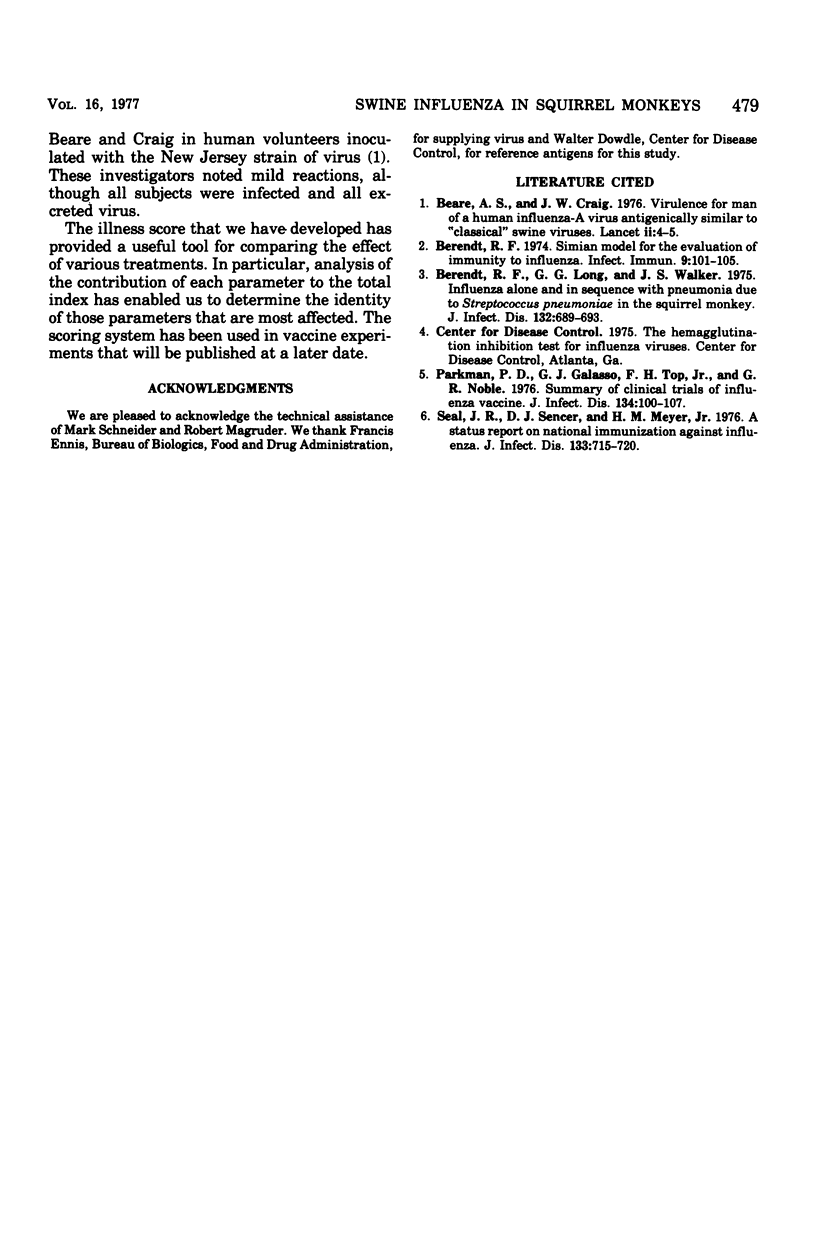Abstract
To determine whether a model could be established for laboratory investigations, nine squirrel monkeys were inoculated intratracheally with 10(7) median egg-infectious doses of influenza virus type A/New Jersey/8/76 (HSW1N1) (swine influenza virus). They responded with clinically detectable illness including fever, leukopenia, decreased food consumption, increased respiratory rate, occasional coughing, labored breathing, nasal discharge, and lethargy. Convalescence was well advanced by the day 10. All monkeys excreted virus for 7 to 8 days. A scoring procedure (illness score) has been developed for use in studies of vaccine and chemotherapeutic efficacy.
Full text
PDF



Selected References
These references are in PubMed. This may not be the complete list of references from this article.
- Beare A. S., Craig J. W. Virulence for man of a human influenza-A virus antigenically similar to "classical" swine viruses. Lancet. 1976 Jul 3;2(7975):4–5. doi: 10.1016/s0140-6736(76)92964-0. [DOI] [PubMed] [Google Scholar]
- Berendt R. F., Long G. G., Walker J. S. Influenza alone and in sequence with pneumonia due to Streptococcus pneumoniae in the squirrel monkey. J Infect Dis. 1975 Dec;132(6):689–693. doi: 10.1093/infdis/132.6.689. [DOI] [PubMed] [Google Scholar]
- Berendt R. F. Simian model for the evaluation of immunity to influenza. Infect Immun. 1974 Jan;9(1):101–105. doi: 10.1128/iai.9.1.101-105.1974. [DOI] [PMC free article] [PubMed] [Google Scholar]
- Seal J. R., Spencer D. J., Meyer H. M. From the National Institute of Allergy and Infectious Diseases of the National Institutes of Health, the Center for Disease Control, and the Bureau of Biologics of the Food and Drug Administration: a status report on national immunization against influenza. J Infect Dis. 1976 Jun;133(6):715–720. doi: 10.1093/infdis/133.6.715. [DOI] [PubMed] [Google Scholar]


